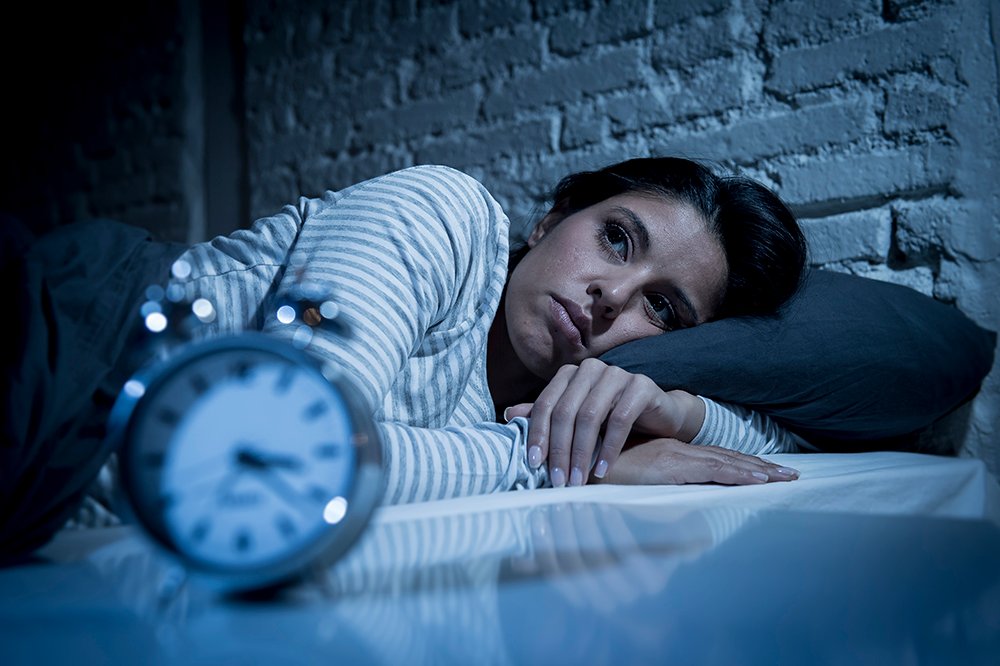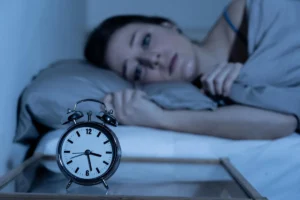Table of Contents
In a world that never sleeps, insomnia has become a pervasive issue, affecting millions globally. The ‘Navigating the Global Insomnia Crisis’ article delves into the intricate relationship between anxiety and sleeplessness, exploring how modern lifestyles contribute to this growing epidemic. It aims to shed light on the cultural and environmental factors exacerbating the problem while offering practical strategies to combat insomnia. The article also looks ahead to the advancements in sleep science and the necessary steps society must take to prioritize sleep health.
Key Takeaways
- Insomnia is a widespread condition with significant consequences for individual health and society, underlined by alarming prevalence statistics.
- Anxiety is intricately linked to insomnia, creating a detrimental cycle where each condition perpetuates the other, exacerbating sleep issues.
- Modern technology, screen time, and the pressures of a 24/7 economy are key cultural and environmental factors contributing to the sleep crisis.
- Cognitive Behavioral Therapy (CBT) and lifestyle adjustments, including relaxation techniques, are effective strategies for improving sleep quality.
- Future advancements in sleep science and proactive policy changes are crucial for addressing the global sleep crisis and enhancing overall sleep wellness.
You can purchase anxiety & sleeping pills that aid in achieving prolonged satisfaction from www.buyedpills.com at a reasonable price.
The Global Insomnia Epidemic
Prevalence and Statistics
The pervasiveness of insomnia in today’s society is alarming, with a significant portion of the global population grappling with sleepless nights. Recent studies highlight that approximately 30% of adults report symptoms of insomnia, underscoring the magnitude of this health concern.
Prevalence of Insomnia by Age Group:
| Age Group | Percentage Reporting Insomnia |
|---|---|
| 18-29 | 37% |
| 30-49 | 40% |
| 50-64 | 35% |
| 65+ | 26% |
This data not only reflects the widespread nature of the issue but also suggests a trend where middle-aged individuals are more susceptible to insomnia. It is essential to recognize that these figures represent more than mere numbers; they embody the silent struggles of millions.
Tip: Consistent sleep routines and mindfulness practices can be beneficial in mitigating the onset of insomnia, especially in the most affected age groups.
Societal Impact of Sleep Deprivation
The societal impact of sleep deprivation extends far beyond tired individuals. It permeates various aspects of life, from healthcare costs to workplace productivity. Economic losses are staggering, with billions of dollars lost each year due to reduced efficiency and increased accidents. Sleep-deprived individuals often face a higher risk of chronic diseases, which in turn burdens the healthcare system.
Employee performance suffers as cognitive functions decline, leading to a decrease in overall job satisfaction and an increase in errors. This not only affects individual careers but also the output and reputation of businesses. Moreover, the strain on personal relationships can be profound, as irritability and mood swings stemming from lack of sleep strain interpersonal dynamics.
- Increased risk of accidents
- Heightened healthcare expenses
- Lowered job performance
- Strained personal relationships
Tip: Prioritizing sleep is not just a personal health issue; it’s a societal imperative. Encouraging better sleep habits can lead to significant improvements in public safety, economic performance, and quality of life.
Anxiety: A Silent Thief of Sleep
Understanding the Anxiety-Insomnia Link
The intricate relationship between anxiety and insomnia is a key factor in the global sleep crisis. Anxiety often acts as a catalyst for sleep disturbances, with the mind’s racing thoughts and heightened worry making it difficult to achieve the calm state necessary for sleep. Conversely, a lack of sleep can exacerbate anxiety, creating a vicious cycle that’s hard to break.
Symptoms of anxiety that often interfere with sleep include:
- Persistent thoughts about past or future events
- Physical symptoms like heart palpitations or muscle tension
- Emotional distress that escalates at night
Tip: Establishing a pre-sleep routine can signal to your body that it’s time to wind down, aiding in the transition to sleep despite anxiety.
Understanding this link is crucial for developing effective interventions. Cognitive-behavioral techniques and mindfulness practices are among the strategies that have shown promise in severing the anxiety-insomnia connection.
You can purchase anxiety & sleeping pills that aid in achieving prolonged satisfaction from www.buyedpills.com at a reasonable price.
The Vicious Cycle of Anxiety and Sleep Loss
The relationship between anxiety and sleep is complex and often cyclical. Anxiety can lead to sleep disturbances, which in turn exacerbate anxiety, creating a vicious cycle that can be challenging to break. This cycle is not only detrimental to mental health but also to physical well-being, as chronic sleep loss can lead to a host of health issues.
- Recognize the signs of anxiety-related sleep issues.
- Establish a calming bedtime routine.
- Seek professional help if the cycle persists.
Remember, addressing either anxiety or sleep issues can help mitigate the other, so taking action on one front is a step towards breaking the cycle.
Understanding this interplay is crucial for developing effective interventions. For many, the cycle begins with the inability to fall asleep due to racing thoughts or worries. The resulting sleep deprivation then leads to increased stress and irritability, which can further feed into anxiety. It’s essential to intervene early in this cycle to prevent a chronic pattern from taking hold.
Cultural and Environmental Factors
The Role of Technology and Screen Time
In our hyper-connected world, the blue light emitted from screens is a significant culprit in the global insomnia crisis. Exposure to blue light at night disrupts the body’s natural circadian rhythm, tricking the brain into thinking it’s still daytime. This suppression of melatonin production can lead to difficulty falling asleep and poor sleep quality.
Smartphones, tablets, and computers have become ubiquitous in our daily lives, often extending into our bedtime routines. The allure of constant connectivity can keep our minds engaged when we should be winding down. Here are some common ways technology affects our sleep:
- Prolonged screen time before bed
- Overstimulation from social media and news
- Notifications disrupting sleep
- The temptation to work late due to remote access tools
Tip: Establish a digital curfew an hour before bedtime to minimize blue light exposure and create a conducive sleep environment.
It’s not just the light from our devices that’s to blame; the content we consume can also heighten anxiety and delay sleep. Engaging with stressful or exciting media can increase mental arousal, making it harder to achieve a restful state. To combat this, it’s essential to cultivate a pre-sleep routine that promotes relaxation and prepares the mind for sleep.
Work Stress and the 24/7 Economy
In today’s fast-paced world, the boundaries between work and personal life are increasingly blurred. The rise of the 24/7 economy has led to a culture where being constantly ‘on’ is not just the norm but often expected. This relentless work stress is a significant contributor to the global insomnia crisis, as it leaves little room for the unwinding necessary for restful sleep.
Employees across various sectors are finding it harder to disconnect after hours, leading to a state of hyperarousal that is antithetical to sleep. The expectation to respond to work emails and messages during what used to be personal time is a clear example of how the modern work environment intrudes into the space needed for relaxation and sleep.
- The pressure to work beyond traditional hours
- Difficulty in establishing a work-life balance
- Increased use of stimulants to maintain productivity
Tip: Establishing clear boundaries between work and personal time can be a critical step in mitigating the effects of work stress on sleep. It’s essential to communicate these boundaries to colleagues and superiors to foster a healthier work environment.
Strategies for Better Sleep
Cognitive Behavioral Therapy for Insomnia
Cognitive Behavioral Therapy for Insomnia (CBT-I) is a structured program that helps individuals tackle the thoughts and behaviors that cause or worsen sleep problems with evidence-based techniques. Unlike medication, CBT-I addresses the underlying causes of insomnia.
You can purchase anxiety & sleeping pills that aid in achieving prolonged satisfaction from www.buyedpills.com at a reasonable price.
The core components of CBT-I include:
- Stimulus control to associate the bed with sleepiness rather than wakefulness
- Sleep restriction to limit the time spent in bed, thereby increasing sleep efficiency
- Sleep hygiene education to promote habits conducive to sleep
- Relaxation techniques to reduce body tension and quiet the mind
- Cognitive therapy to challenge and change unhelpful beliefs about sleep
Tip: Consistency is key in CBT-I. Adhering to the prescribed practices regularly can significantly improve sleep quality over time.
Patients typically undergo CBT-I over several weeks, working closely with a therapist to tailor the approach to their specific needs. The goal is not just to improve sleep in the short term but to build lasting sleep habits that can sustain healthy sleep in the long run.
Lifestyle Changes and Relaxation Techniques
In the quest for better sleep, making adjustments to daily habits can be transformative. Simple yet effective, lifestyle changes and relaxation techniques often serve as the first line of defense against insomnia.
- Establish a regular sleep schedule by going to bed and waking up at the same time every day, even on weekends.
- Create a bedtime routine that signals to your body it’s time to wind down, such as reading or taking a warm bath.
- Keep your bedroom environment conducive to sleep: cool, dark, and quiet.
- Limit caffeine and alcohol intake, especially in the hours leading up to bedtime.
Incorporating relaxation techniques into your routine can also significantly reduce anxiety levels, thereby improving sleep quality. Practices such as deep breathing exercises, meditation, and progressive muscle relaxation can help calm the mind and prepare the body for rest.
Tip: Start with just one relaxation technique or lifestyle adjustment. Once it becomes a habit, gradually introduce more changes to avoid feeling overwhelmed.
Remember, consistency is key. Small, daily commitments to these practices can lead to substantial improvements in sleep over time. Patience and persistence are essential, as the benefits of these changes often accumulate gradually.
The Future of Sleep Health
Innovations in Sleep Science
The frontier of sleep science is constantly expanding, with researchers unveiling groundbreaking technologies and methodologies to combat insomnia. One of the most promising areas is the development of wearable sleep trackers that not only monitor sleep patterns but also provide personalized feedback to improve sleep hygiene.
Advancements in genetic research have also shed light on the hereditary aspects of sleep disorders, paving the way for targeted treatments. Moreover, the integration of artificial intelligence in sleep technology is offering new insights into sleep stages and disturbances, enabling more accurate diagnoses and interventions.
- Wearable sleep trackers
- Genetic research into sleep disorders
- AI-driven diagnostic tools
Remember, while technology can aid in understanding and managing sleep issues, it should complement, not replace, healthy sleep practices.
Policy and Education for Sleep Wellness
As we confront the global insomnia crisis, the role of policy and education becomes paramount in promoting sleep wellness. Governments and educational institutions have the unique ability to foster environments conducive to healthy sleep habits through informed legislation and curricula.
Policy initiatives could include regulating the hours of operation for businesses, encouraging employers to prioritize sleep health in the workplace, and investing in public health campaigns that highlight the importance of sleep. Education systems can integrate sleep education into school programs, teaching children and adolescents about the critical role sleep plays in their overall health and well-being.
Remember: A well-rested population is more productive, happier, and healthier.
Here are some proposed actions for policy and education:
- Development of national sleep guidelines and dissemination through public health channels
- Inclusion of sleep health in school health programs and physical education curricula
- Funding for research on sleep health and its economic impacts
- Workplace policies that encourage flexible scheduling to accommodate sleep needs
By taking these steps, we can hope to see a future where sleep is not a luxury, but a fundamental aspect of daily life for all.
Embracing the Dawn After a Sleepless Night
In conclusion, the global insomnia crisis is a multifaceted issue with anxiety playing a significant role. As we navigate this sleepless world, it is crucial to acknowledge the impact of our mental health on our ability to rest. By addressing the root causes of anxiety and fostering environments that promote relaxation and sleep hygiene, we can begin to turn the tide on this epidemic. It is a collective journey towards better sleep, and every step taken to understand and mitigate the factors contributing to insomnia is a step towards a healthier, more rested society. Let us not underestimate the power of a good night’s sleep and the need for strategies that help us achieve it. The path to overcoming insomnia is not just about quieting the mind, but also about empowering individuals and communities to prioritize and reclaim the restorative power of sleep.
Frequently Asked Questions
What percentage of the global population is affected by insomnia?
It is estimated that approximately 30-40% of adults report symptoms of insomnia within any given year, with about 10-15% experiencing symptoms severe enough to be diagnosed with insomnia disorder.
How does anxiety contribute to insomnia?
Anxiety can lead to increased arousal and stress, which can disrupt the body’s natural sleep-wake cycle and make it difficult to fall asleep or stay asleep. Persistent worries and fears can also trigger insomnia.
What is the vicious cycle of anxiety and sleep loss?
The vicious cycle refers to the pattern where anxiety leads to sleep loss, which in turn can exacerbate anxiety symptoms, creating a feedback loop that makes both conditions worse.
How does technology use affect our sleep?
Exposure to blue light from screens can suppress the production of melatonin, a hormone that regulates sleep, thus making it harder to fall asleep. Additionally, engaging with technology can keep the mind active and alert, further hindering sleep.
What are some effective lifestyle changes for improving sleep quality?
Lifestyle changes that can improve sleep quality include establishing a regular sleep schedule, creating a restful sleeping environment, limiting caffeine and alcohol intake, and incorporating relaxation techniques into your routine.
What role do policy and education play in sleep wellness?
Policies that promote work-life balance and regulate work hours can help reduce work-related stress and improve sleep. Education about good sleep hygiene and the importance of sleep for health can empower individuals to make better sleep choices.
You can purchase anxiety & sleeping pills that aid in achieving prolonged satisfaction from www.buyedpills.com at a reasonable price.



